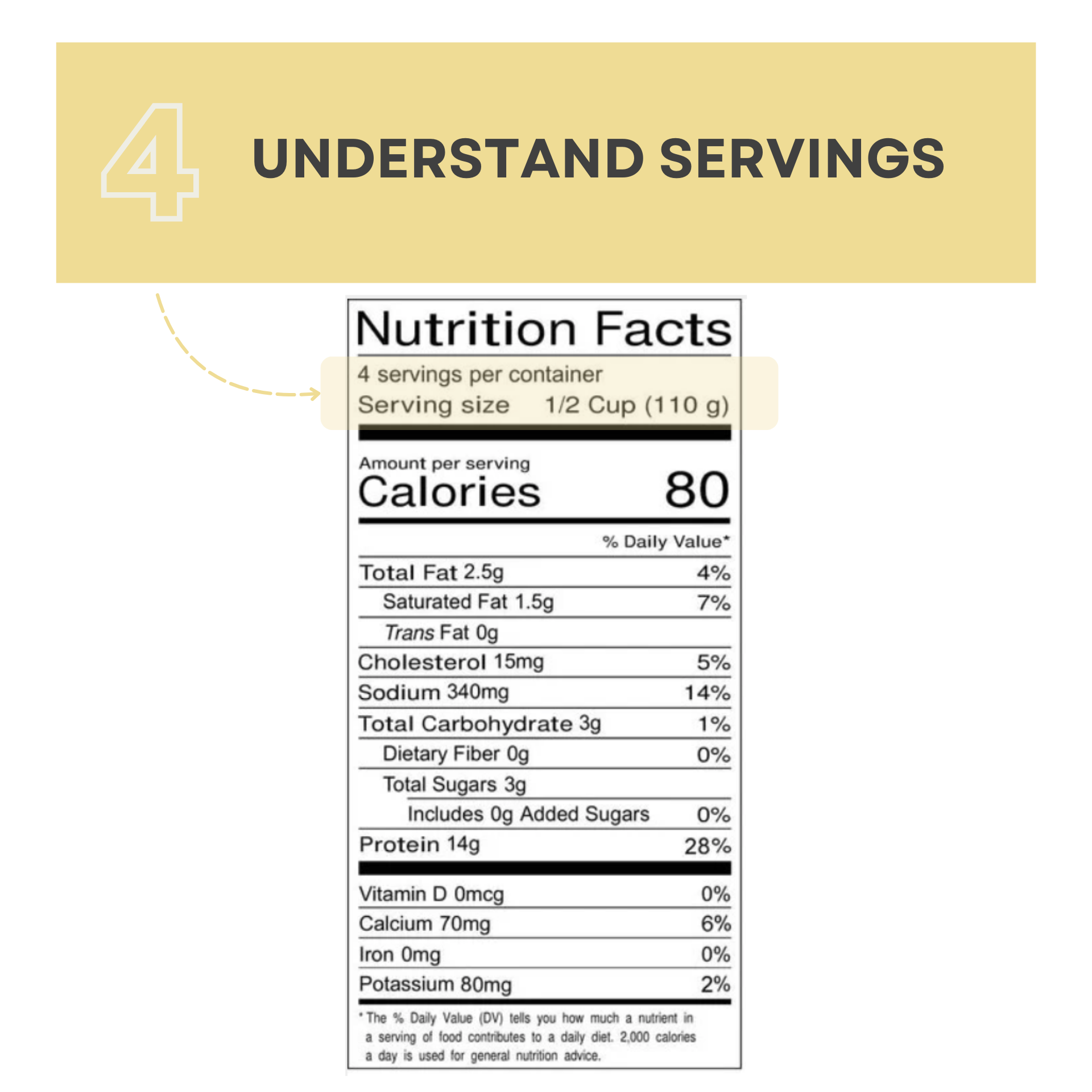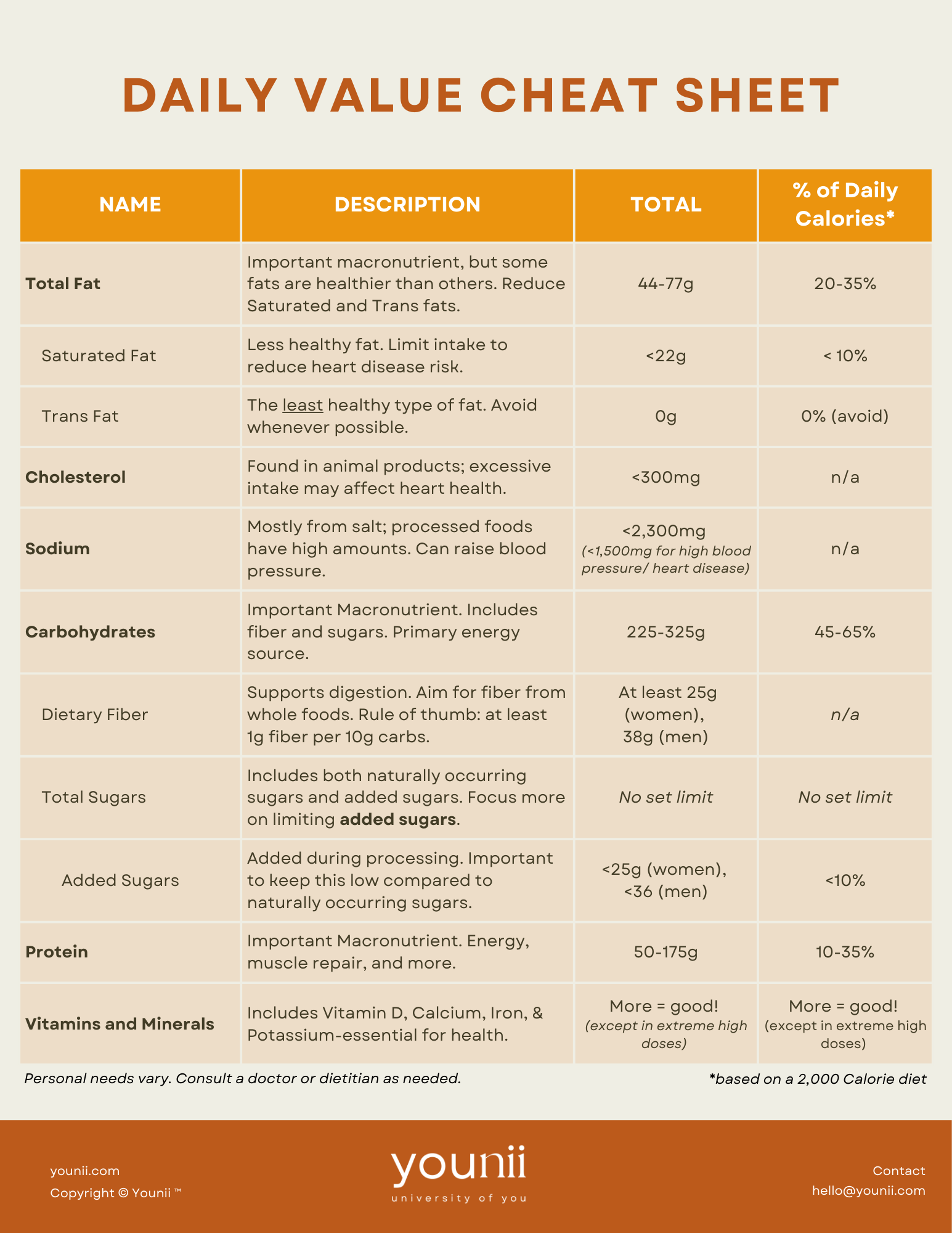How To Read a Food Label
Reading a food label can be not only confusing, but also misleading.
First things first: Don’t Let the Front Label Fool You
Instead of reading the front label, we recommend you read the back label. Why? The front label can be misleading and contain confusing claims and jargon.
A common example of claims on the front label….
“Natural” or “Organic” (these don’t immediately equate to healthy).
Why?
Currently, the FDA considers “natural” to mean that nothing artificial or synthetic has been added to the product.
“Organic” by the USDA for meat, poultry, eggs, and dairy products means from animals with no antibiotics or growth hormones. “Organic” by the USDA for plant products means without most conventional pesticides or fertilizers made from synthetic ingredients.
“Made with Organic Ingredients” means at least 70% of ingredients are certified organic
Most importantly, unhealthy ingredients can still be considered organic or natural
Besides these two examples, there are plenty of misleading package claims to look out for and understand.
Remember: The front label is what you see walking down the aisle. They are designed to catch your eye and convince you to buy the product.
To solve this problem, we recommend you read the Nutrition Facts Label on the back.
Download a copy of our free Food Label Decoder.
Focus On The Back Label
What steps should you take to decode the Nutrition Facts Label, which you will find on the back of a product?
1 . Start with the Ingredient List
The ingredient list should be your main priority.
The quantity of ingredients is a great place to start on the ingredient list: the fewer the ingredients, the less processed.
Check the quality of ingredients next. Look for whole foods and whole grains. Be aware that there are different and tricky names for sugars, sodium, and unhealthy fats.
For example, sugar goes by countless names, like high fructose corn syrup, honey, different types of syrups, fructose, glucose, and more. Be discerning if you don’t understand an ingredient.
In Summary:
Be skeptical of foods with long ingredient lists. Prioritize products with short ingredient lists.
Look for products that list whole foods as the first three ingredients.
Fun tip: The more you avoid processed foods, the more you’ll avoid being confused and misled by the ingredient list, since whole foods don’t need an ingredient list :)
2 . Look for Red Flags
Saturated Fat, Trans Fat, Sodium, and Added Sugar are the main concerns with packaged food today. This is the section you should scrutinize.
Per day, how much is too much?
Saturated Fat: Less than 22g (< 10% of daily calories)
Trans Fat: Goal of 0, the “worst” fat (due to processing, health risk)
Sodium: Less than 2,300mg (<1,500mg for high blood pressure/heart disease)
Added Sugar: Less than 25g (women), less than 36g (men)
3 . Is it Nutritionally Valuable?
Seek out foods that are dense in valuable nutrients, like Dietary Fiber, Vitamin D, Calcium, Iron, and Potassium.
The % Daily Value helps you determine if a food is high or low in a nutrient. Typically, 5% DV or less is considered low, and 20% DV or more is considered high.
4 . Servings
Understand the servings per container & serving size. Serving sizes are standardized to make it easier to compare to other foods, and are usually listed in a specific unit, like cups, tablespoons (T or tbsp), or grams (g). This isn’t always the recommendation on how much you should eat, but rather reflects all the nutrition values listed on the label.
Remember: everything on the food label is based on one serving!
5 . Calories
Calories provide a measure of how much energy you get from a single serving. Nutrition facts labels use 2,000 calories a day as a general calorie recommendation, but your needs may be higher or lower depending on age, sex, height, weight, and physical activity level.
Download a copy of our free Food Label Decoder.
To understand the quantities of Daily Values a bit more, the chart below explains each item and their recommended daily intake.
Remember: the above information is based on a 2,000 calorie diet, but personal needs vary.
Consult a doctor or dietitian as needed.
Want more?
Our Nutrition Essentials Workshop is accepting new students now!








